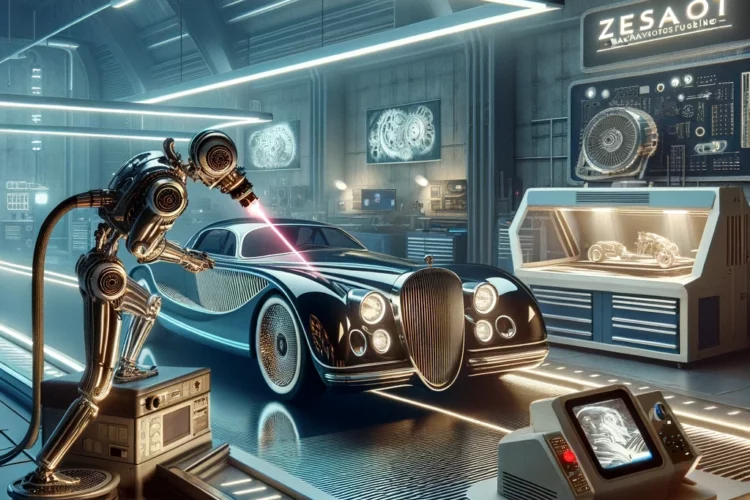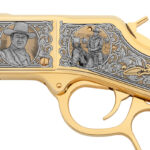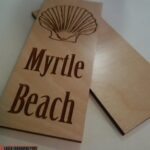
I. Introduction to Restoring Classic Cars with CNC Technology
II. Benefits of Using CNC Machines in Classic Car Restoration
III. Choosing the Right CNC Machine for Your Restoration Project
IV. CNC Machining Techniques for Classic Car Parts Replication
V. Designing and Programming CNC Machines for Classic Car Restorations
VI. Tips and Best Practices for Using CNC Technology in Classic Car Restoration
VII. Case Studies: Successful Classic Car Restorations Using CNC Technology
I. Introduction to Restoring Classic Cars with CNC Technology
Hey there, classic car enthusiasts! If you’re passionate about restoring vintage vehicles to their former glory, you’re in for a treat. We’re about to explore how CNC technology can revolutionize the way you approach classic car restorations. So buckle up, and let’s dive in!
Understanding CNC Technology
First things first – what exactly is CNC technology? CNC stands for Computer Numerical Control, which might sound a bit technical, but don’t worry, we’ll break it down. Essentially, CNC machines are automated tools that use pre-programmed software to control and manipulate machine shop tools. These tools can include lathes, mills, routers, and grinders, among others.
CNC Machines in Classic Car Restoration
Now, you might be wondering, “How does this relate to classic car restoration?” Great question! Classic car restoration often involves working with parts that are hard to find, out of production, or simply worn out. Enter CNC machines. With CNC technology, you can recreate these hard-to-find parts with precision and ease, making the restoration process smoother and more efficient.
The Magic of CNC Machines
When you feed a CNC machine a design, it can create that part with incredible accuracy, down to the smallest detail. This means you can replicate intricate parts that would be nearly impossible to recreate by hand. Plus, once you’ve programmed a design into a CNC machine, you can reproduce the same part as many times as you need.
Why CNC Technology is a Game-Changer
The beauty of CNC technology lies in its versatility and precision. Whether you’re restoring a classic car from scratch or just need to replace a few parts, CNC machines can help you achieve your goals. They can handle a wide range of materials, from metals to plastics, and can create complex shapes and designs with ease.
Join the CNC Revolution
In the world of classic car restoration, CNC technology is a game-changer. It opens up a world of possibilities, allowing you to restore classic cars with greater accuracy, efficiency, and creativity. So why not join the CNC revolution and see what it can do for your restoration projects?
Stay tuned for our next sections, where we’ll delve deeper into the benefits of using CNC machines in classic car restoration, how to choose the right CNC machine for your project, and much more. Until then, happy restoring!
Benefits of Using CNC Machines in Classic Car Restoration
Classic car restoration is a labor of love, and using CNC machines can make the process more efficient and enjoyable. Here are some of the benefits of using CNC technology in classic car restoration:
Increased Accuracy and Precision
One of the biggest advantages of using CNC machines in classic car restoration is the increased accuracy and precision they offer. CNC machines can produce parts with incredibly tight tolerances, ensuring that every part fits together perfectly. This is especially important in classic car restoration, where many parts are no longer in production and must be custom-made.
Consistency and Repeatability
Another benefit of using CNC machines is their ability to produce consistent and repeatable results. Once a part has been programmed into the machine, it can be reproduced over and over again with the same level of accuracy and precision. This is particularly useful when restoring multiple cars of the same make and model, as it ensures that all parts are identical.
Time and Cost Savings
Using CNC machines can also save time and money in the long run. While the upfront cost of a CNC machine may be higher than traditional machining methods, the time and cost savings can be significant. CNC machines can produce parts much faster than manual methods, reducing the overall time required for a restoration project. Additionally, CNC machines can produce parts with less waste, reducing material costs.
Flexibility and Versatility
CNC machines are incredibly versatile and can be used to produce a wide range of parts for classic car restoration. From engine components to body panels, CNC machines can produce parts of all shapes and sizes. Additionally, CNC machines can be programmed to work with a variety of materials, including metals, plastics, and composites.
Improved Quality Control
Using CNC machines can also improve quality control in classic car restoration. Because CNC machines produce parts with such tight tolerances, there is less room for error. Additionally, CNC machines can be equipped with quality control features, such as sensors and cameras, to further ensure that parts meet the required specifications.
Expert Advice: Choosing the Right CNC Machine for Your Restoration Project
When it comes to choosing the right CNC machine for your classic car restoration project, there are a few factors to consider. First, consider the size and complexity of the parts you will be producing. Smaller parts may require a smaller, more precise machine, while larger parts may require a larger, more powerful machine. Additionally, consider the materials you will be working with and choose a machine that is equipped to handle those materials. Finally, consider your budget and choose a machine that fits within your price range.
In Conclusion
Using CNC machines in classic car restoration offers numerous benefits, including increased accuracy and precision, consistency and repeatability, time and cost savings, flexibility and versatility, and improved quality control. When choosing a CNC machine for your restoration project, consider the size and complexity of the parts you will be producing, the materials you will be working with, and your budget. With the right CNC machine, you can achieve stunning results in your classic car restoration projects.
Choosing the Right CNC Machine for Your Restoration Project
When it comes to restoring classic cars, choosing the right CNC machine can make all the difference in the world. Not only can it help you create accurate replicas of hard-to-find parts, but it can also save you time and money in the long run.
Types of CNC Machines
There are several types of CNC machines available on the market, each with its own strengths and weaknesses. Some of the most popular include:
- CNC Mills: These machines are perfect for creating complex shapes, such as those found in engine blocks and transmission cases.
- CNC Lathes: These machines are ideal for creating cylindrical parts, such as crankshafts and axles.
- CNC Plasma Cutters: These machines are great for cutting metal sheets and plates, such as those used in body panels and chassis components.
- CNC Routers: These machines are perfect for creating intricate shapes in wood, plastic, and other materials, such as those found in interior trim and dashboards.
Factors to Consider When Choosing a CNC Machine
When choosing a CNC machine for your classic car restoration project, there are several factors to consider:
- Machine Size: The size of the machine will determine the size of the parts you can create. Make sure to choose a machine that is large enough to handle your projects, but not so large that it takes up too much space in your workshop.
- Machine Capabilities: Consider the types of materials you will be working with, as well as the level of detail required for your project. Some machines may be better suited for certain materials or applications than others.
- Machine Precision: Precision is key when it comes to classic car restoration. Look for a machine that can produce parts with tight tolerances and minimal distortion.
- Machine Cost: CNC machines can be expensive, so it’s important to consider your budget when making a purchase. However, keep in mind that investing in a high-quality machine can save you money in the long run by reducing the need for costly repairs and replacement parts.
Expert Advice
When it comes to choosing a CNC machine for your classic car restoration project, it’s always a good idea to consult with experts in the field. Consider reaching out to other classic car enthusiasts or CNC machine manufacturers for advice and recommendations. They can provide valuable insights into the different types of machines available, as well as best practices for using them in classic car restoration projects.
In conclusion, choosing the right CNC machine for your classic car restoration project is an important decision that can have a significant impact on the success of your project. By considering factors such as machine size, capabilities, precision, and cost, as well as seeking expert advice, you can make an informed decision and start creating accurate replicas of hard-to-find parts with ease.
CNC Machining Techniques for Classic Car Parts Replication
When it comes to restoring classic cars, finding original or even replacement parts can be a real challenge. That’s where CNC (Computer Numerical Control) technology comes in, allowing you to replicate those hard-to-find parts with precision and ease.
Scan and Replicate
One popular technique for replicating classic car parts is scanning an original part and using the resulting digital model to create a new one. This process involves using a 3D scanner to capture the shape and dimensions of the original part, then importing the resulting data into CAD (Computer-Aided Design) software. From there, you can refine the design and prepare it for CNC machining.
Tip: When scanning an original part, make sure to capture all the necessary details, including any mounting holes, threads, or other features. This will ensure that your replica part is an exact match for the original.
Create from Scratch
If you don’t have an original part to scan, you can still create a replica using CNC technology. The first step is to create a digital model of the part using CAD software. This can be done by taking measurements of the original part and using those dimensions to create a digital model, or by using reference images and technical drawings to create a model from scratch.
Tip: When creating a digital model from scratch, be sure to double-check your measurements and dimensions to ensure accuracy. A small mistake in the digital model can lead to a big problem when it comes time to create the physical part.
Choose the Right Material
Once you have a digital model of the part, it’s time to choose the right material for the job. CNC machines can work with a wide variety of materials, including metals, plastics, and composites. The key is to choose a material that is strong enough to withstand the stresses of use, but also easy to work with on the CNC machine.
Tip: When choosing a material, consider factors such as strength, weight, and cost. For example, aluminum is a popular choice for CNC machining because it is lightweight, strong, and relatively inexpensive.
Cut with Precision
With the digital model complete and the material chosen, it’s time to start cutting. CNC machines use a variety of cutting tools to create precise shapes and contours, from end mills and drills to lathes and routers. The key to a successful cut is to choose the right tool for the job and to program the machine with the correct feeds and speeds.
Tip: When programming a CNC machine, be sure to account for the size and shape of the cutting tool, as well as the material being cut. This will ensure a clean, accurate cut every time.
Finishing Touches
Once the cutting is complete, it’s time to add the finishing touches. This may include sanding, polishing, or painting the part to match the original. The goal is to create a replica that looks and functions just like the original, so take your time and pay attention to the details.
Tip: When finishing a CNC-machined part, be sure to use the right tools and techniques for the job. Sandpaper, polishing compounds, and paint can all be used to achieve a professional-looking finish.
With these CNC machining techniques, you can replicate classic car parts with precision and accuracy. Whether you’re restoring a classic car or just want to create a replica of a favorite part, CNC technology makes it possible.
Designing and Programming CNC Machines for Classic Car Restorations
Designing and programming CNC machines for classic car restorations can be an exciting and rewarding process. It allows you to bring your restoration project to life with precision and accuracy.
Understanding CNC Programming
Before we dive into the specifics of designing and programming CNC machines for classic car restorations, it’s important to understand the basics of CNC programming. CNC, or Computer Numerical Control, is a method used to control machine tools using pre-programmed sequences of machine control instructions.
These instructions, or codes, are written in a programming language known as G-code, which tells the machine what to do and how to do it. For example, G-code can instruct the machine to move in a specific direction, control the speed of the machine, or activate specific tools.
Designing Your Restoration Parts
The first step in designing and programming a CNC machine for classic car restorations is to create a digital model of the part you want to create or replicate. This can be done using a 3D modeling software, such as AutoCAD or SolidWorks.
When designing your restoration parts, it’s important to consider the materials you’ll be using, as well as the specific requirements of your restoration project. For example, if you’re replicating a part that needs to withstand high stress or heat, you’ll need to choose a material that can handle those conditions.
Programming Your CNC Machine
Once you have your digital model, the next step is to create a CNC program that will instruct the machine on how to create your part. This involves converting your digital model into G-code instructions that the CNC machine can understand.
There are several software programs available that can help with this process, such as Mastercam or Fusion 360. These programs allow you to import your digital model and generate the necessary G-code instructions for your CNC machine.
Tips for Successful CNC Programming
Programming a CNC machine for classic car restorations can be a complex process, but there are several tips that can help ensure success:
- Start with a simple project: If you’re new to CNC programming, start with a simple project to get a feel for the process.
- Practice safe machine operation: Always follow safe machine operation procedures to prevent injuries or damage to the machine.
- Test your program: Before running your program on the CNC machine, test it in a simulator to ensure it’s working correctly.
- Seek help when needed: Don’t be afraid to seek help if you’re having trouble with a particular aspect of CNC programming.
With these tips in mind, you’ll be well on your way to designing and programming CNC machines for your classic car restoration projects.
Tips and Best Practices for Using CNC Technology in Classic Car Restoration
As you embark on your classic car restoration journey using CNC technology, it’s essential to know the ins and outs of using these machines effectively. In this section, we’ll share some practical tips and best practices to help you harness the full potential of CNC machines in your restoration projects.
1. Understand the Materials
Before you start machining, familiarize yourself with the properties of the materials you’ll be working with. Different materials require different cutting speeds, feed rates, and tooling. Understanding these variables will help you achieve the best results and avoid damaging your parts or tools.
2. Choose the Right Tools
Selecting the appropriate cutting tools for your project is crucial. High-quality tools can make a significant difference in the accuracy and finish of your machined parts. Consider factors such as tool geometry, coatings, and material when choosing your tools.
3. Optimize Your CNC Program
A well-written CNC program can significantly improve your machining process. Consider the following tips when programming your CNC machine:
- Use efficient toolpaths: Opt for toolpaths that minimize tool travel, maximize material removal, and reduce machining time.
- Set appropriate cutting parameters: Ensure your program includes the correct cutting speeds, feed rates, and depth of cuts for your materials and tools.
- Implement smart roughing and finishing strategies: Utilize roughing strategies to remove large amounts of material quickly and efficiently, then switch to a finishing strategy for improved surface finish and accuracy.
4. Maintain Your CNC Machine
Regular maintenance is key to ensuring your CNC machine remains in optimal working condition. Keep your machine clean, check for wear and tear, and replace worn-out components promptly. Additionally, consider the following tips:
- Lubricate moving parts: Regular lubrication can help prevent wear and tear on your CNC machine’s moving components.
- Monitor coolant levels: Maintaining proper coolant levels is essential for effective chip removal and tool cooling.
- Calibrate regularly: Periodically calibrate your CNC machine to ensure accuracy and repeatability in your machining processes.
5. Safety First
Safety should always be a top priority when working with CNC machines. Always wear appropriate safety gear, such as safety glasses, gloves, and ear protection. Keep your work area clean and well-organized to prevent accidents, and never leave your CNC machine unattended during operation.
6. Continuous Learning
The world of CNC machining is constantly evolving, with new techniques, tools, and technologies emerging regularly. Stay up-to-date with the latest developments in the field, and don’t be afraid to experiment with new methods and approaches. Join online forums, attend workshops, and network with other CNC enthusiasts to expand your knowledge and skills.
By following these tips and best practices, you’ll be well on your way to mastering the use of CNC technology in classic car restoration. Happy machining!
Case Studies: Successful Classic Car Restorations Using CNC Technology
Now that we’ve covered the ins and outs of using CNC technology for classic car restorations, let’s dive into some inspiring examples of successful projects! You’ll see how CNC machining has helped bring these classic beauties back to life, making them even better than before.
1. 1967 Ford Mustang Fastback
Meet the ’67 Mustang Fastback, a true American icon. When restorer John embarked on this project, he had one goal in mind: to create a show-stopping classic with modern performance. To achieve this, he turned to CNC technology.
CNC Machined Parts:
- Custom aluminum intake manifold
- Billet aluminum valve covers
- Custom suspension components
John’s ’67 Mustang Fastback now boasts a powerful engine and a smooth ride, all thanks to CNC machined parts. The custom intake manifold and valve covers not only improve performance but also add a touch of modern flair to the engine bay. And with CNC-machined suspension components, this Mustang handles like a dream.
2. 1957 Chevrolet Bel Air
The ’57 Chevy Bel Air is a timeless classic that deserves the best. Restorer Mary knew she needed precision and accuracy to restore this beauty to its former glory. CNC technology was the perfect solution.
CNC Machined Parts:
- Custom billet aluminum grille
- Bespoke trim pieces
- CNC-machined engine components
Mary’s Bel Air now sports a stunning custom grille that catches the eye and perfectly complements the car’s iconic lines. The bespoke trim pieces add a touch of elegance, while the CNC-machined engine components ensure this classic runs as smoothly as it looks.
3. 1970 Dodge Charger
The ’70 Dodge Charger is a muscle car legend, and restorer Mike wanted to make his project stand out from the crowd. Enter CNC technology, which helped him create truly unique parts for his Charger.
CNC Machined Parts:
- Custom billet aluminum wheels
- Bespoke interior trim pieces
- CNC-machined engine components
Mike’s Charger now boasts custom billet aluminum wheels that give it a one-of-a-kind look. The bespoke interior trim pieces add a touch of luxury, while the CNC-machined engine components ensure this muscle car packs a punch.
The Power of CNC Technology in Classic Car Restoration
These case studies demonstrate the incredible potential of CNC technology in classic car restoration. By embracing this cutting-edge technology, restorers can create truly unique and high-performing classic cars that are sure to turn heads. So, what are you waiting for? Start exploring the world of CNC technology and bring your classic car restoration dreams to life!










Comments